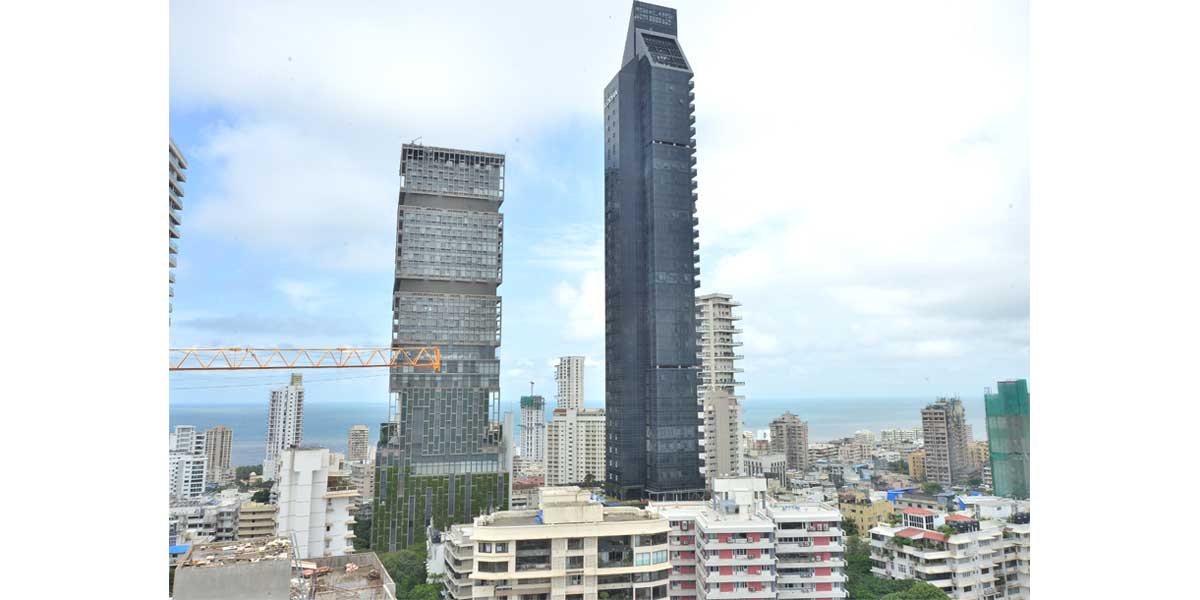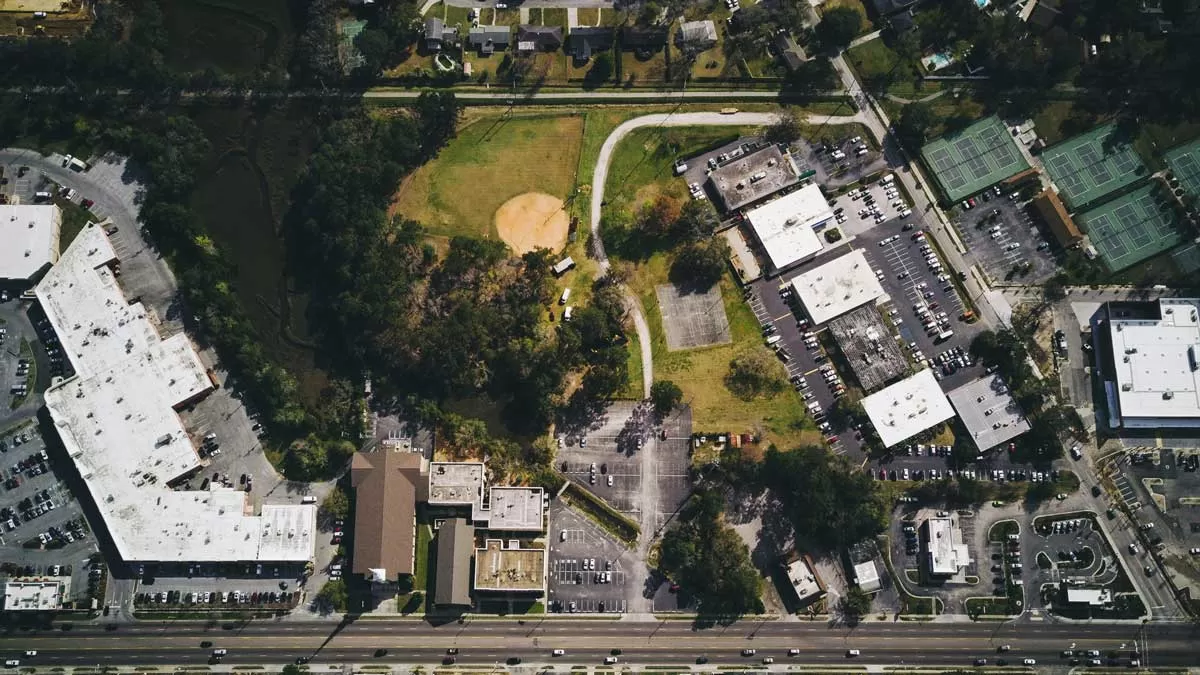Bridging the housing shortage in a country with a population over 1.3 billion is a dire need. India has about 39 cities with populations exceeding 1 million. Of these, Mumbai and Delhi have populations that exceed 10 million. Evidently, there is an urgent need for rapid urbanisation to address the massive urban housing shortage plaguing the country. And the answer is to go tall, soon!
Our cities are already undergoing a massive construction boom. Notably, 73 150-m+ buildings are already completed; another 55 150-m+ buildings and two 300-m+ buildings are under construction.
High-rise construction creates tremendous opportunities for vendors, whether it is equipment and material manufacturers, cement and steel manufacturers, concrete pump makers, technology and software providers, and manufacturers of elevators, doors and windows, paints, tiles, facades and beams, just to name a few.
To delve into these opportunities, the latest advancements in technologies to construct high-rises, and how time and cost can be managed efficiently in building tall, CW organised a virtual roundtable on the topic on July 16.
Time and cost to build tall
It takes about five to seven years for a 150-m high-rise construction. This includes structural work, entire finishes and services.
While most vendors may claim that a cycle time of seven days can be achieved, it really takes an average of 10-12 days; so, about two to three slabs can be cast in a month, shares Alok Agarwal, Director, Projects, Adhiraj Constructions. But some may reach the same in a seven-day cycle and do three to four slabs a month.
The slab cycle depends on the floor plate, observes Arun Sahai, COO, Ahluwalia Contracts. “If the average floor plate is about 8,000-10,000 sq ft, which cannot be finished in one pour, that floor plate takes a minimum two to three pours, which means the period of starting the cycle of the slab and finishing it would be about another week. It is normally not less than 15 days, depending on the size of the floor plate, and it can even be more in case you have to curtail the cycle.”
According to him, a cycle of 10-12 days is achievable in very ideal conditions. “I have yet to achieve that cycle in India, because when the floor plate gets bigger, the cycle definitely goes longer.” For a residential redevelopment project Ahluwalia Contracts is doing, it is able to achieve 5,000- 6000 sq ft of floor plate in one tower in eight days. For commercial complexes in cities like Mumbai, the cycle could go longer.
The cost per slab differs on a project-to-project basis, depending on the size of the slab, the plate, etc. “But from a construction point of view, the structural work, which is RCC – comprising concrete, shuttering and reinforcement – would be somewhere between Rs 1,200 and Rs 1,500 per sq ft of construction, depending on its complexity,” says Agarwal.
Enabling faster construction
Every developer’s concern is further reducing the slab cycle time and cost.
Technology is the answer!
It majorly depends on the formwork system, says Sahai. For Agarwal, the Mivan type of aluminium formwork helps in reducing cycle time. Here, Sahai adds, “The structural design from the structural consultant would determine the best formwork system to be adopted in a project.”
Aluminium shuttering, composite-type shuttering, table-form shuttering, horizontal floor shuttering, jump-form shuttering, slipform shuttering and having an RMC plant close by may help achieve a five to seven-day slab cycle, says Dr Himanshu M Raje, Director, HM Raje Structural Consultants.
But while India has the technology, the lack of technique and skilled labour remains a problem. “We don't find people skilled enough to manage the formwork, resulting in poor efficiency,” observes Sahai. While organisations such as the Construction Skill Development Council of India (CSDC) undertake general training, specific training required for high-rise buildings is missing. “Practical training on sites should come from big construction companies who do high-rises,” he says. “Training is definitely required to increase execution efficiency.”
Quality and speed
Quality is the by-product of the technology deployed.
How you up the quality and speed of high-rise construction is an attribute of the design, hardly relevant to a contractor at the construction stage, believes Tushar Srivastava, President & Corporate Head, Business Development & Marketing, Capacit'e Infraprojects. The firm has experimented with automatic climbing systems (ACS), and done an amalgamation of ACS with the conventional system, aluminium framework, among others. “We are clocking five slabs a month for a range from 7,000-9,500 sq ft per slab. So the dependency of quality and speed is a collective effort of the contractor, developer and consultant.”
Clearly, there has been a sea change in the way technology is used. There is a lot of thought in terms of working on mixed designs of concrete; designers are using outriggers, rafters and temperature-controlled concrete, notes Srivastava.
Here, a relevant point Manish Negandhi, Group Director-Structures, BuroHappold Engineering, makes is the need to break out of the old shackles of appointing the contractor at the end of the design stage. “In a high-rise building, you really require a contractor to be on board from Day 1, so that the technology, time cycle and everything can go hand in hand and the designers with the help of the contractors can achieve the desired result for the client.” Further, to improve speed of construction, he suggests the transition of the shapes of the building or sizes of the members to be minimised to a lesser extent.
In agreement, Dr Raje too says the architect, mechanical, electrical, plumbing and structural consultants, construction contractor and planner need to be on the same page to push a project faster.
For high-rises, the mindset has to move away from conventional design; this is of utmost importance. In international projects, unless the structural engineer gives a basic design, architects will not even start to pen down their design and there are no structuring unit modifications because the importance of the cores and structural systems is understood, explains Negandhi. “An efficient structural system is the best way for timely construction.”
Steel vs. concrete
Interestingly, the most common material used in high-rise construction is concrete – about 98 per cent of buildings use concrete for construction. An exception is Capacit'e Infraprojects’ built composite-in-nature steel building, which is probably the tallest residential building in Asia. The deployment of the method of construction depends upon the location, explains Srivastava. “For this project, owing to the location and time restrictions of moving logistics, we could not do cast in-situ because it would involve vibrations and noise as far as the formwork is concerned. So
we had to evolve from conventional construction to steel.”
While structural steel could be an ideal solution, it is sometimes not feasible for a developer to construct a residential building using it, considering the cost at which the project will be sold, notes Dr Raje. It is more feasible for commercial buildings. “And this advantage can only be taken when the cost-effective ratio is available. Structural steel always carries a high cost and requires special contractors. We need to bear this in mind when we talk about high-rises.”
“Most important, for residential, it has to be a composite type of steel building because fire rating is important,” adds Dr Raje. “Moreover, the contractors required for steel structures have to be skilled – all optimal joints need to be checked properly and a lot of non-destructive testing and ultrasonic testing of the steel and weld joints, etc, have to be done if bolting has to be done. This this type of specialisation is lagging with us.”
The right contractors are required, says Negandhi, adding that we are left with just one or two contractors with expertise in steel. Also, from the fire aspect, “steel needs a lot of maintenance, not only during the construction but also the design life of the structure,” he notes. “Hence, fireproofing has to be evaluated and checked.”
Materials in play
Technologies and materials are aplenty and developers have the liberty to use them.
In India, the ordinary Portland cement (OPC) 53 grade of cement is largely used and the quality of concrete for high-rises ranges from M60 to M100. Plasticisers, micro silica, curing compounds, etc, are largely used in high-rise construction, shares Dr Raje. “Then, we also need to attack the corrosion problem; so, corrosion inhibitors need to be placed in concrete.” Further, there are many different types of lifts.
“We also need to design high-rises keeping wind pressure in mind,” he continues. “The recent cyclones led to glass windows falling in many high-rise buildings, which has already sounded the alarm about what we engineers have to convince architects and developers – that in case of glass, we need to have at least twice the safety factor.” The parameter of wind pressure with glass facades is going to be an important one to consider.
Digital connectivity
Developers are making efforts to ensure people’s journeys in a high-rise are safe, convenient and reliable through the use of digital connectivity, through elevator systems, sensors, fire safety and facility management services, among others.
A facility management company is a must for a tall high-rise to manage the space and parking entry, exert fire safety norms, and maintain vertical transportation. “There has been a great evolution as far as the vertical transportation system is concerned,” notes Tushar Srivastava, President & Corporate Head, Business Development & Marketing, Capacit'e Infraprojects. “Call system lifts are becoming popular. We have intelligent building management systems. Then, there are high-speed elevators.”
In residential buildings, fire safety will be of paramount importance. “But while fire escape shoots are being deployed by most developers, I’m afraid none of the people staying in a high-rise actually know the SOPs [standard operating procedures] that need to be followed in case of a fire,” he highlights.
Challenging tall
From a developer’s point of view, a major challenge for a high-rise building, according to Alok Agarwal, Director, Projects, Adhiraj Constructions, is maintaining a good saleable-to-construction area. “For constructing 1 sq ft of saleable area, you have to construct a big common area,” he explains. This significantly adds to the cost. “Another major challenge and a debatable point when we talk about our concerns with consultants and architects is that as per the bylaws, there have to be two staircases and the staircases have to be much wider. Then, the high speed of lifts and the fire and life safety aspects come into play. Thus, the cost exponentially increases for a high-rise building considering all the quality parameters, and this is a major concern for the developer.”
Technology is an imperative
The formwork system or aluminium shuttering is the most prevalent for high-rise construction. Besides, you can work without equipment like tower cranes, high-capacity concrete pumps and man-material hoists.
Another crucial element for high-rise construction is implementation of BIM (building information modelling). This becomes important so that the contractor is aware of the problems to come, has a real idea of all the coordination that can be done well in advance to the actual skill, and the construction activity can continue without any hindrances, notes Negandhi. BIM LOD 300 is a preliminary level but the industry is steadily moving towards LOD 400, in which everything can be modelled into the software and the quantities can be taken care of.
“Instrumentation is another key aspect in high-rise construction because even small tolerance changes may impact the lift or the additional forces on the structural members,” says Negandhi. In agreement, Dr Raje shares that they were able to trace out cracks in a structure because of the instrumentation done. “We have been doing a lot of instrumentation for foundations, too, and we are trying to convince developers that this is not a major cost and will be advantageous in the long run.” In a 300-m tall building BuroHappold had done a couple of years ago, because of the instrumentation done right at the start of the project, “you could go there, read those readings and ensure the building is behaving the way it was to behave,” shares Negandhi.
Additionally, any building going up to about 30 m should have a protective safety screen, suggests Srivastava. A safety screen is an external envelope that covers the entire building. Dr Raje also suggests that safety barriers should be placed at different floors. Vertical transportation to transport labour is another crucial factor Srivastava highlights.
Further, damping systems in high-rises are generally provided from a human comfort level point of view, for when the deflection of the buildings is beyond control and you need to control the deflections, explains Negandhi. “For instance, when there is wind pressure on a high-rise building beyond a point, the people staying within start feeling discomfort, and that is where the dampers come into the picture.” There are various types of dampers, but again they are a costly affair and require specialised contractors coming in to assist the regular contractor to put the exact damping system in place.
Outriggers is another advancement crucial in high-rise construction to deal with wind pressure. “When the building starts moving in both directions, outriggers help reduce the drift,” explains Dr Raje. “Though it is a costly affair, people are slowly and steadily accepting it now.”
Now that’s a tall storey!
- SERAPHINA D’SOUZA


















